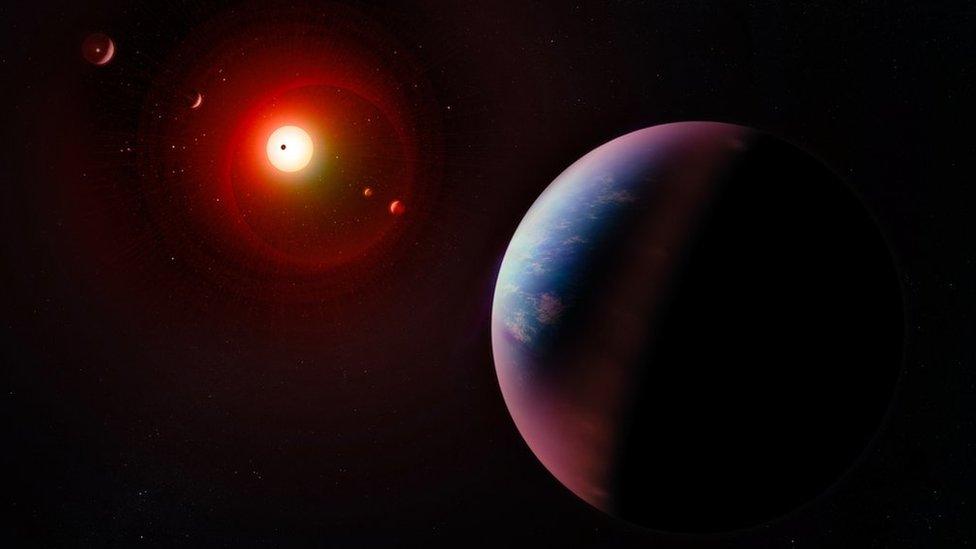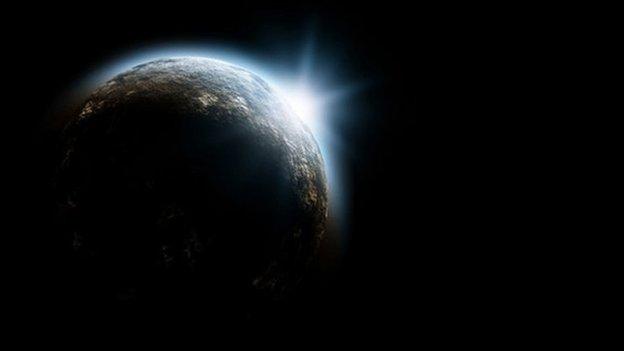Scottish names suggested for distant planet and star
- Published

Astronomers have identified thousands of exoplanets since the 1990s
Scottish entries are among the finalists in a competition to name a distant planet and star.
Astronomers in the UK invited suggestions from young people for the Sun-like star known to stargazers as WASP-13 and exoplanet WASP-13b.
Scottish names and words in the running include Ben Nevis and Breagha, which is Gaelic for "beautiful".
WASP-13 is 747 light years from Earth. A single light year is about 6 trillion miles.
Astronomers have identified almost 4,000 exoplanets since the first were discovered in the 1990s, according to US space agency Nasa.
Scientists speculate that some may have the right conditions to support life.
The International Astronomical Union asked UK astronomers to name WASP-13 and WASP-13b. The exoplanet was discovered 10 years ago by an international team led by British astronomers.
Names among the finalists, external include Ben Nevis - Britain's tallest mountain near Fort William - for the star. It has been suggested by Burnley's 31st Burnley Guide Unit which has entered the name of the Welsh peak Snowdon for the planet.
'Beautiful celestial descriptions'
Saoghal, meaning "world" for the exoplanet and Breagha for the star are also in the running. The two Gaelic words were put forward by the Highlands' 379 (County of Ross) Squadron RAF Air Cadets.
Finlaggan for the planet and Dunyvaig for the star are finalists too after being suggested by 1st Islay, 3rd Argyll, Scout Group. The names are connected to the history of the ancient Lord of the Isles.
The competition was launched by professor Robert Walsh, of the University of Central Lancashire, who said the shortlisted names all had "long-standing cultural, historical, or geographical significance to the UK".
He added: "In the mix are beautiful celestial descriptions in Scottish and Manx Gaelic, ancient island monuments and some of the best areas in the country to observe the night sky."
All the finalists have been put to a public vote and the winning names will be announced next month.
In 2015, there was a bid to name an exo-planet after Schiehallion, a famous Scottish mountain.
Ayrshire Astronomical Society was the only Scottish group on the shortlist of the International Astronomical Union's NameExoWorlds competition at the time.
Its entry was for the system Upsilon Andromedae, with Moore suggested as the name for its star.
The star is visible with the naked eye from Scotland.
Morocco's Vega Astronomy Club won the vote.
- Published15 December 2015
